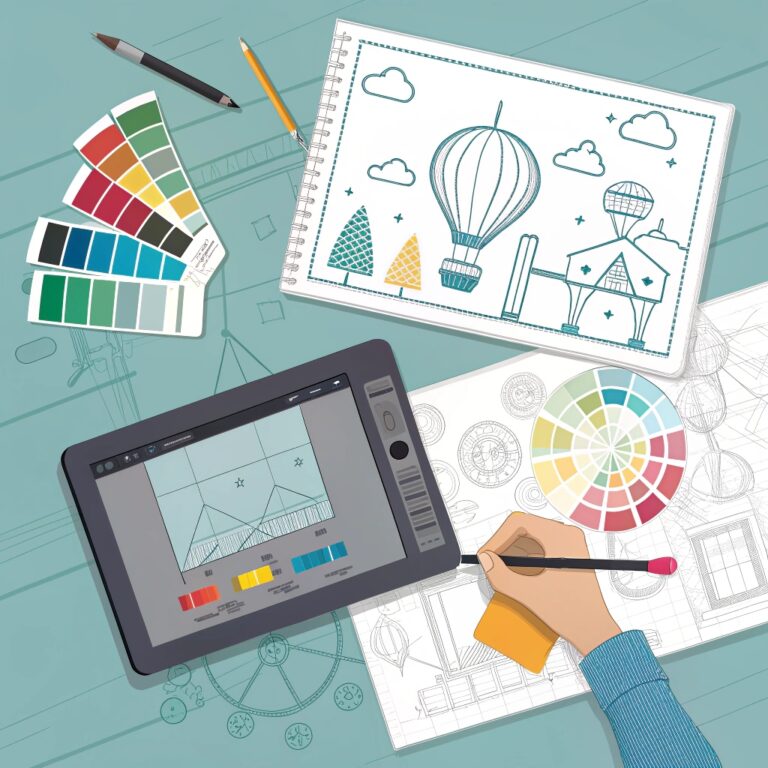
The Design genre is where creativity meets strategy—where aesthetic beauty is balanced by purpose, and every detail tells a story. These books explore how design shapes the world around us, from the objects we use daily to the spaces we inhabit, the brands we trust, and the experiences we remember.
Design books don’t just showcase stunning visuals—they decode the thinking behind them. They reveal how designers solve problems, influence culture, and enhance the human experience through intentional form, layout, and function. Whether you’re a seasoned professional or an admirer of great design, this genre opens your eyes to how thoughtful design makes life better.
The Design genre typically covers:
Graphic & Visual Design: Typography, branding, color theory, layout, and digital design principles.
Interior & Spatial Design: How we shape physical environments—from homes to offices to public spaces.
Industrial & Product Design: The process behind designing objects that are both useful and beautiful.
UX/UI & Digital Interfaces: Designing digital experiences with the user in mind—across apps, websites, and systems.
Design Theory & Philosophy: Exploring the ethics, psychology, and cultural significance of design.
From bold logos to minimalist furniture, the Design genre helps readers understand the ‘why’ behind the ‘wow.’
Writing in the Design genre means combining visual impact with thoughtful explanation. Whether you’re creating an instructional manual, a visual anthology, or a personal design philosophy, your book should educate, inspire, and delight. Here’s how to get started:
Define Your Niche and Audience
Are you writing for aspiring graphic designers? Interior decorators? UX professionals? Clarify your specialty and tailor your tone, examples, and visuals accordingly.
Balance Visuals With Insight
Design books must look good—but they also need to say something. Combine striking images with commentary that breaks down decisions, techniques, and goals.
Explain the “Why” Behind the Work
Go beyond aesthetics to explain function, context, and strategy. What problem did this design solve? Why was this choice made?
Make the Abstract Practical
Include tips, frameworks, grids, or exercises readers can apply to their own work. Great design books don’t just show—they teach.
Celebrate Diversity and Innovation
Feature work from a range of disciplines, cultures, and perspectives. Design is global, and your book should reflect that richness.
Curate With Intention
If showcasing multiple works or case studies, organize them with a narrative arc or thematic structure that enhances understanding.
Design Your Book as a Work of Design
Typography, layout, margins, and flow matter just as much as content. Your book should embody good design, not just describe it.
These influential titles have shaped how designers think, work, and create in every medium:
The Design of Everyday Things by Don Norman
Did you know? This foundational book on user-centered design helped bring usability and intuitive function into the spotlight for designers worldwide.
Thinking with Type by Ellen Lupton
Did you know? Lupton’s guide to typography is considered essential reading for anyone working with text—across print and digital platforms.
Steal Like an Artist by Austin Kleon
Did you know? Though broader than just design, this inspiring book champions creativity through remixing, borrowing, and reinterpreting—core practices in design thinking.
Design as Art by Bruno Munari
Did you know? Munari challenges the divide between fine art and industrial design, championing beauty in everyday function and object design.
Don’t Make Me Think by Steve Krug
Did you know? This no-nonsense UX classic transformed how web designers approach usability and interaction—with clarity, humor, and efficiency.
Explores visual communication through layout, color, typography, and branding.
Example: Grid Systems in Graphic Design by Josef Müller-Brockmann
Focuses on how spaces are arranged, styled, and optimized for beauty and use.
Example: The Interior Design Handbook by Frida Ramstedt
Covers interface and experience design across digital platforms, emphasizing usability and flow.
Example: Hooked by Nir Eyal
Explores the creation of functional, beautiful objects—from gadgets to furniture.
Example: Design of the 20th Century by Charlotte & Peter Fiell
Strategic and human-centered approaches to problem-solving through design principles.
Example: Change by Design by Tim Brown
Ready to share your story?
Tell us what you need—we’ll help bring your book to life.
